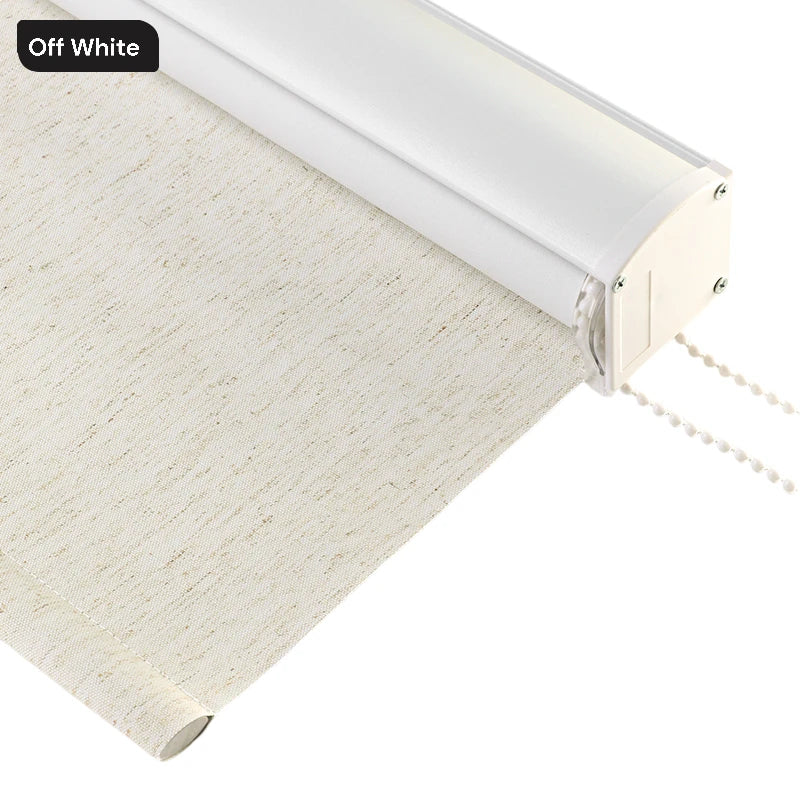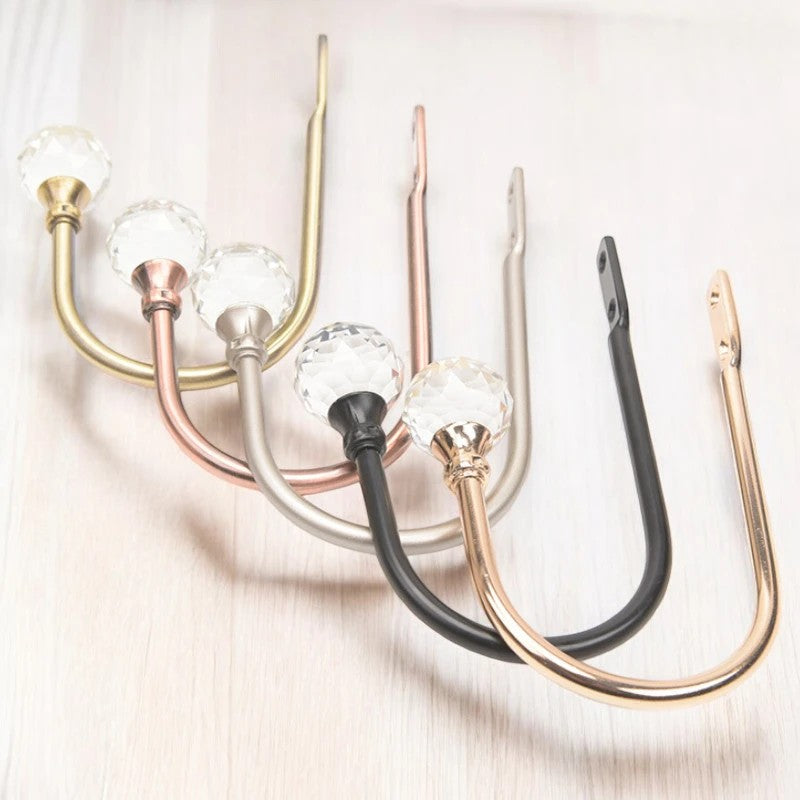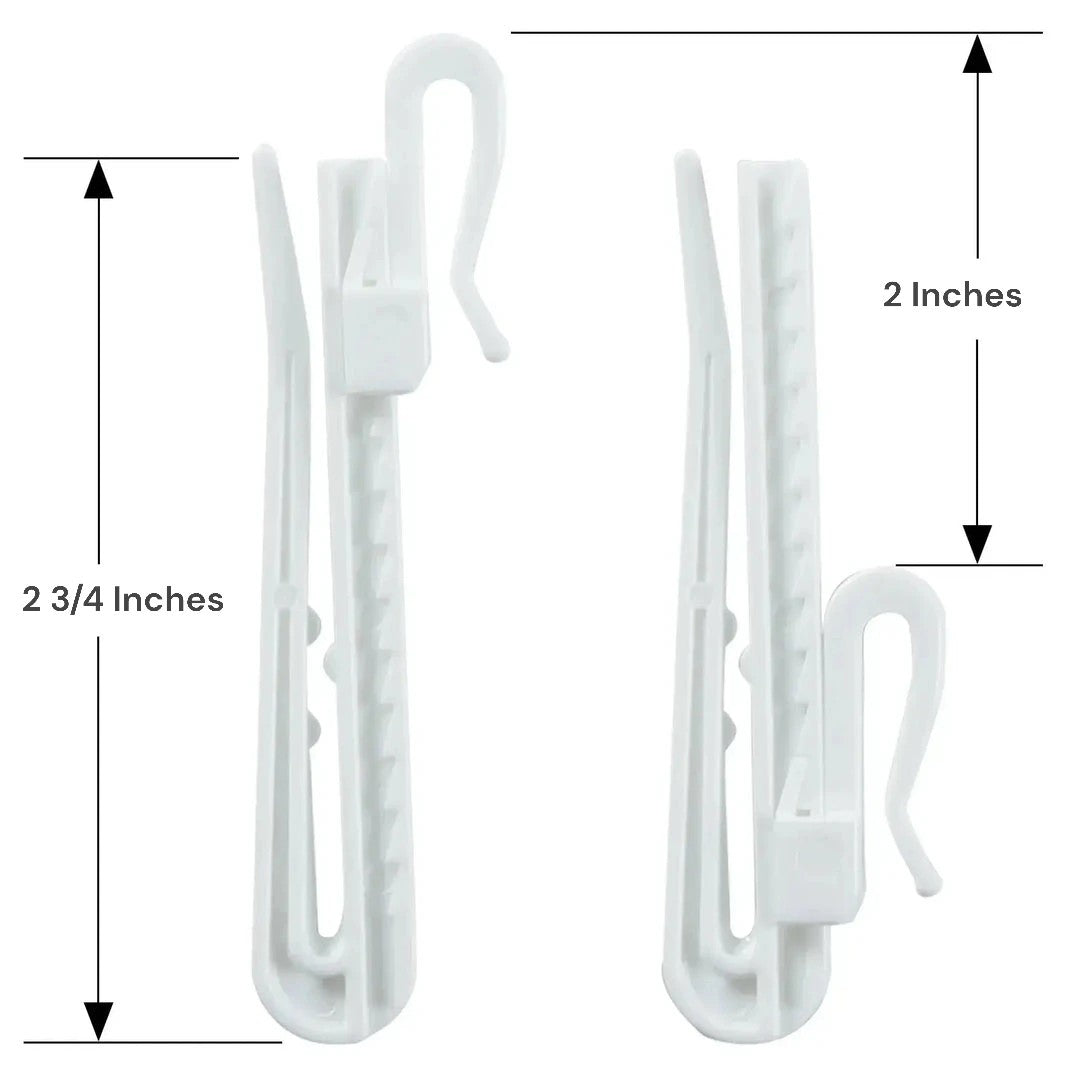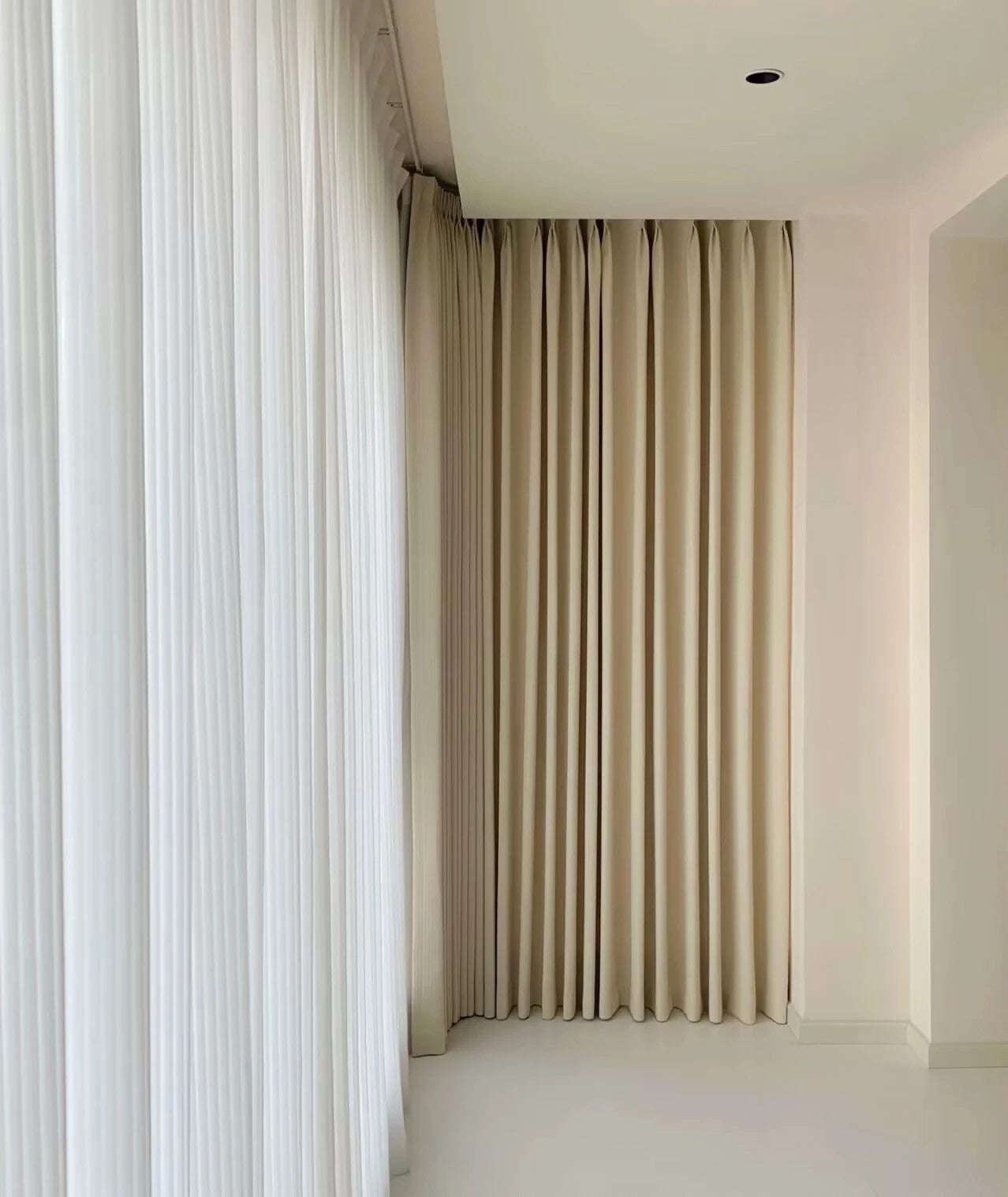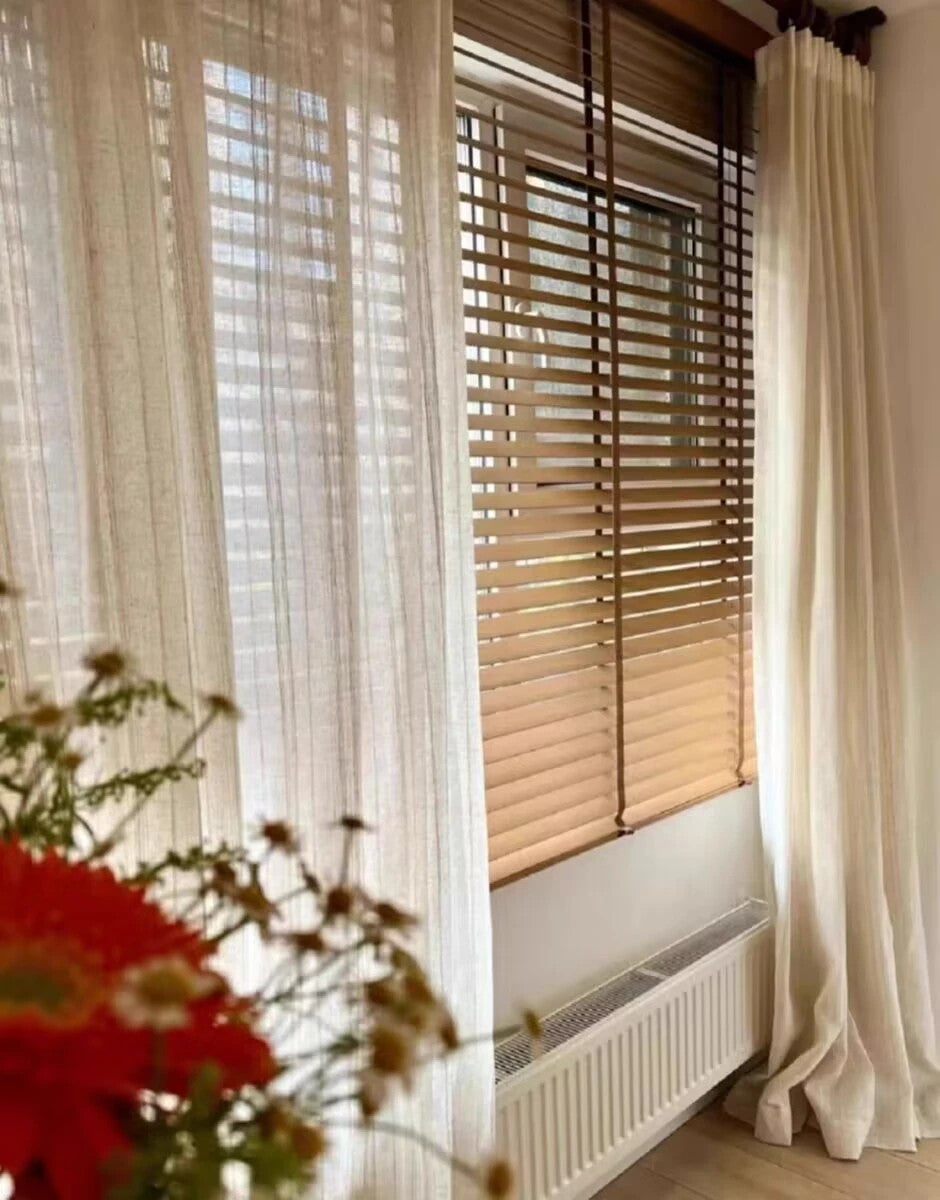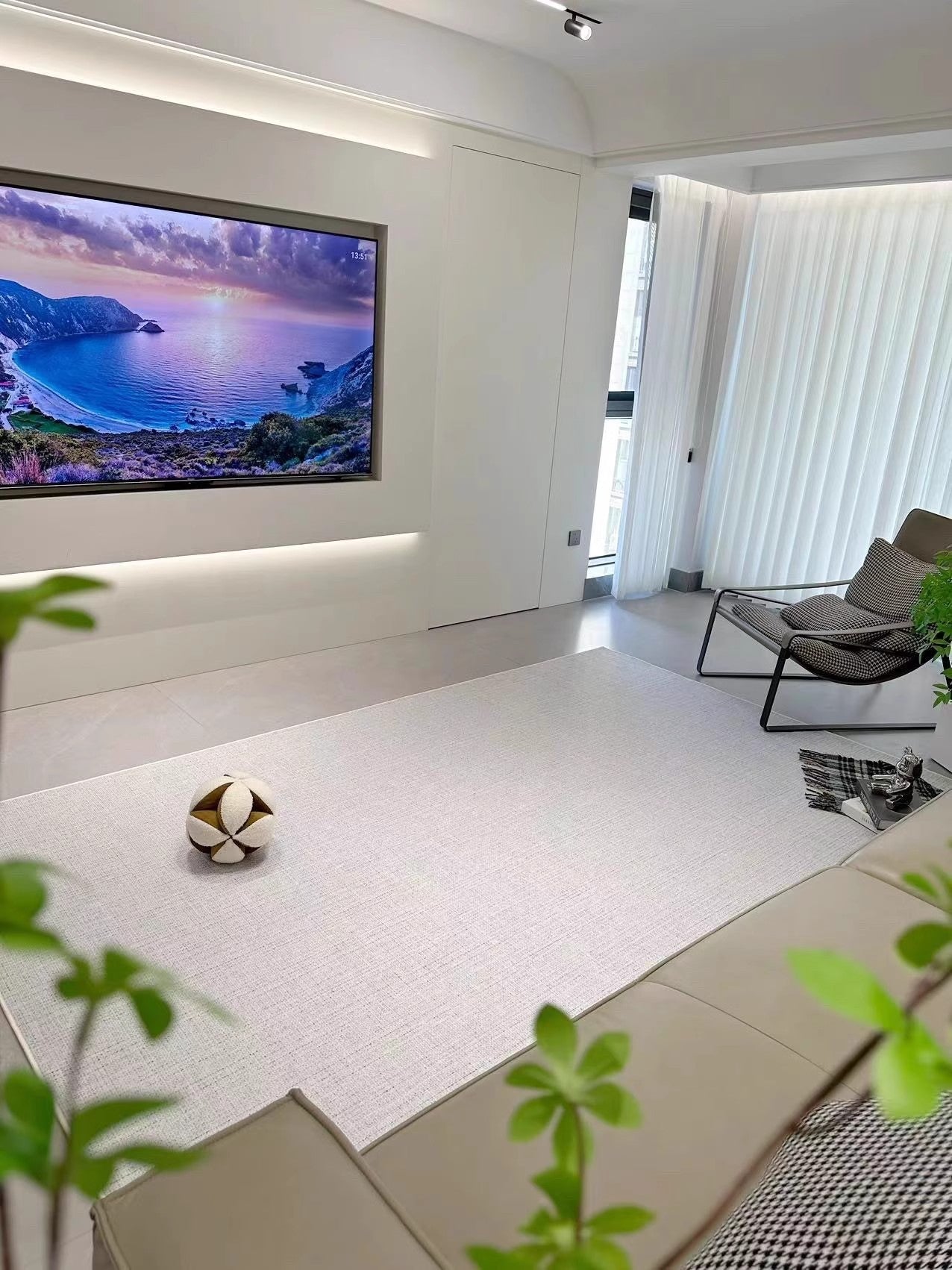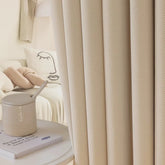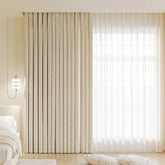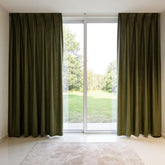The Ultimate Guide to Curtain Measurements: Curtain Length, Width and Fullness
Step-by-Step Guide:
To measure your curtains, you'll need a tape measure, a step ladder, and a notepad and pen to record your measurements. Here are the steps to follow:
- Measure the Width: Start by measuring the width of your window. Measure the entire width of the curtain rod, not just the window. Add an extra 2-4 inches to each side of the window to ensure your curtains provide adequate coverage and privacy.
- Measure the Length: Next, measure the length of the window from the top of the curtain rod to the windowsill or floor, depending on how long you want your curtains to be. Add an extra 4-6 inches to the length measurement if you want your curtains to pool on the floor.
- Account for Fullness: If you want your curtains to have fullness, multiply the width measurement by 1.5 or 2. This will give you the total width of fabric you'll need for your curtains. Add 4-6 inches to the length measurement if you want to create a header style such as rod pocket or tab top.
- Determine the Hem: Decide how long you want your curtains to be and add an extra inch or two for hemming.
- Repeat for Multiple Windows: If you have multiple windows to measure, repeat the process for each window.
WHAT SHOULD BE THE CURTAIN WIDTH OF YOUR CURTAINS?
Firstly, you need to measure the width of your curtain rod, excluding its end finials. The width of your curtain fabric should be approximately double the width of your window for an optimal look.
You may just use our curtain size calculator tool. Our curtain size calculator will help you calculate the right curtain length and width you need to buy to achieve your desired window treatment style.
For instance, if your window width is 54” wide, then you would require two curtain panels that are each 54” wide.
- Width of the rod x 1.5 = bare minimum fullness
- Width of the rod x 2 = ideal fullness (suggested)

WHAT'S THE IDEAL CURTAIN LENGTH FOR CURTAINS?
The look you desire will determine the ideal length for your curtains. Below are four options when considering curtain length:
- STILL LENGTH: These curtains hang till the top of the window sill, making them ideal for kitchen curtains and smaller windows.
- BELOW STILL: These curtains hang about 4-6" below the window sill.
- FLOOR LENGTH: Curtains of this length either touch or hover slightly above the floor.
- PUDDLE EFFECT: Curtain panels of this kind extend about 3” beyond the floor, providing a cozy ambiance. Note: This may not be ideal for homes with pets.

To find the correct length, take a measuring tape and measure from the top of the rod down to your chosen length. For pencil pleat or multifunctional heading curtain panels, start measuring from below the rings, clips, or hooks.
WHAT'S THE IDEAL LENGTH FOR CURTAINS?
The look you desire will determine the ideal length for your curtains. Below are four options when considering curtain length:
- STILL LENGTH: These curtains hang till the top of the window sill, making them ideal for kitchen curtains and smaller windows.
- BELOW STILL: These curtains hang about 4-6" below the window sill.
- FLOOR-LENGTH CURTAINS: Curtains of this length either touch or hover slightly above the floor.
- PUDDLE EFFECT: Curtain panels of this kind extend about 3” beyond the floor, providing a cozy ambiance. Note: This may not be ideal for homes with pets.
To find the correct length, take a measuring tape and measure from the top of the rod down to your chosen length. For pencil pleat or multifunctional heading curtain panels, start measuring from below the rings, clips, or hooks.
Tips and Tricks To Measure For Curtains
Here are some helpful tips to make measuring curtains easier and more accurate:
- Use a level to ensure your curtain rod is straight before measuring.
- If you're hanging curtains above a heat source like a radiator, be sure to measure the clearance between the bottom of the curtain and the heat source to avoid a fire hazard.
- If you're measuring for pleated or gathered curtains, add an extra 2-3 inches to the length measurement to account for the pleats.
Common Mistakes to Avoid:
Avoid these common mistakes when measuring your curtains:
- Measuring only the width of the window instead of the entire width of the curtain rod.
- Measuring the length of the curtains incorrectly.
- Forgetting to account for fullness or pleats.
Conclusion:
Now that you know how to measure curtains correctly, you can create the perfect fit for your home with our custom curtains.
If you have any questions or need additional help, don't hesitate to contact us. Happy measuring!



